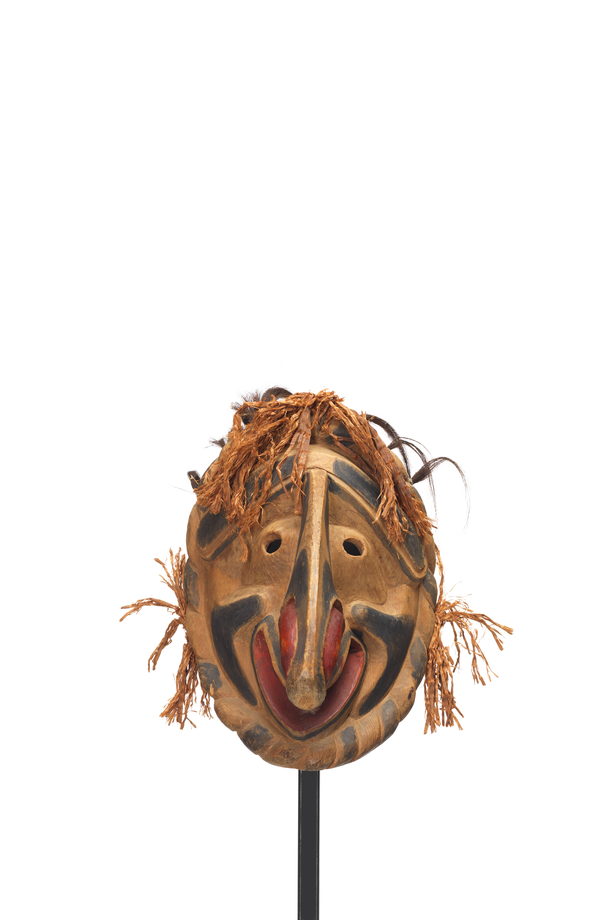Nułamał
Fool Dancer
In earlier times, the Fool Dancer enforced the strict rules of the Potlatch, hitting guests with clubs or axes if they did not behave properly. The most recognizable feature of the Nułamał is his huge nose which he is very self-conscious about. When the Nułamał is seen in potlatches today, he pretends to throw the mucus that is constantly flowing from his large nose on guests.
Owner
Arthur Bondsound, Kwikwasut´inuxw (Gilford Island)
More Information
Nułamał or Fool Dancers are messengers and assistants to the Hamat´sa, helping enforce the laws and proper etiquette of the Winter Ceremonies. They occupy stations near the doorway of the bighouse, watching for any transgression and prevent guests from leaving. They may brandish metre-long clubs or even axes in this role and have been known to beat offenders rather severely. The distinguishing feature of the Nułamał mask is the exaggerated nose from which it is said that mucus constantly flows. Audiences have been known to taunt a member of the Nułamał Society. The dancer would become excited if any person touched his nose or made fun of it. The Nułamał does not dance, but when excited, runs about like a madman, throwing stones, knocking people down and making his cry, which is, “Wi! Wi! Wi!”
Catalogue Information
Materials
Wood, Alder; Bark, Cedar; Hair, Human; Metal, Nails; Paint
Dimensions
30.5 cm
Accession Number
80.01.148
Physical Description
Face mask carved from one piece of alder. At the top and sides are three small bunches of shredded cedar bark, attached with very heavy nails, bent over. Around the top of the head, tufts of hair have been inserted into the wood, and some of these are held with bent nails. A block of wood is nailed to the inside surface at the top, although this is certainly not original and may relate to the modern metal fitting at the bottom. A mouth grip, wrapped in cloth, is inserted in the back above the masks’ mouth, but this does not protrude through to the front. The harness comprises a single piece of cord tied to both sides of the mask. The design is outlined on the unpainted wood in black and red.
